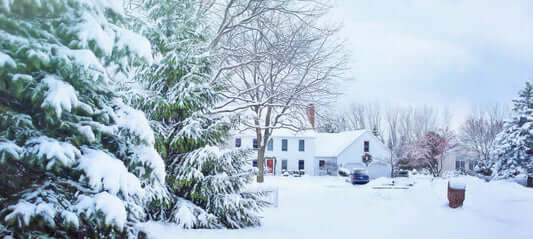How Winter Affects Sleep Apnea and CPAP Therapy
Winter brings cozy nights and festive holidays — but if you have sleep apnea, the season can also bring unique challenges. Dry air, cold temperatures, and indoor heating can irritate your airways, disrupt sleep, and affect your CPAP therapy.
One long-term study even suggests nighttime breathing disturbances may increase by up to 20% in winter compared to other seasons. Understanding these effects will help you stay comfortable and compliant with your CPAP therapy year-round.
The Impact of Winter’s Dry Air on Sleep Apnea
As temperatures drop, humidity levels decrease — especially indoors. Heating systems often dry out the air, which can irritate your respiratory system and worsen sleep apnea symptoms.
Common signs of winter-related CPAP discomfort include:
-
Nasal Congestion: Inflamed nasal passages from dry air make CPAP use harder.
-
Dry Throat and Mouth: Overnight breathing of cold, dry air can lead to soreness, especially without a humidifier.
-
Airway Irritation: Prolonged dry air exposure may trigger coughing or discomfort.
Why Use a CPAP Humidifier in Winter?
A CPAP humidifier adds moisture to the air your CPAP delivers, helping to reduce dryness and irritation.
Key Benefits:
-
Prevents Dryness: Keeps airways moist for better comfort.
-
Improves Sleep Quality: Reduces disturbances caused by dryness.
-
Customizable Settings: Adjustable humidity lets you adapt to seasonal changes.
💡 Tip: Use heated tubing with your humidifier to prevent condensation buildup (known as "rainout").
Do You Need a CPAP Humidifier or Heated Tubing?
If you notice increased dryness, discomfort, or mask leaks in winter, adding a humidifier or heated tubing could help.
-
Dryness & Irritation: Winter air plus pressurized CPAP air can dry your airways.
-
Mask Fit Issues: Dry skin makes it harder for the mask to seal properly.
-
Seasonal Illnesses: Colds, flu, or sinus infections can complicate CPAP use.
-
Condensation (Rainout): Heated tubing helps prevent moisture buildup in your hose.
The Role of Air Purifiers for Better Sleep
Air purifiers can help improve indoor air quality during winter by removing allergens like dust and pet dander, which may irritate your airways.
Benefits of Using an Air Purifier:
-
Removes irritants that can inflame airways
-
Reduces risk of coughing and sneezing at night
-
Supports a healthier sleep environment
Winter CPAP Equipment Care Tips
Here are some ways to maintain your CPAP setup during winter:
-
Prevent Condensation: Use heated tubing or hose covers.
-
Clean Regularly: Dusty winter air requires more frequent cleaning.
-
Check Mask Fit: Cold, dry skin may affect your mask seal — adjust as needed.
-
Replace Filters Often: Clean filters help maintain airflow and prevent dust buildup.
Lifestyle Tips for Comfortable Winter CPAP Therapy
-
Stay Hydrated: Drinking water helps counteract dry air.
-
Use Saline Spray: Keeps nasal passages moist before bedtime.
-
Adjust Your Thermostat: Avoid overheating your room.
-
Run a Humidifier in Your Bedroom: Adds extra moisture to the air.
Recommended Winter CPAP Accessories
-
CPAP Humidifiers: Help relieve dryness and improve therapy comfort.
-
Waterless Humidifiers (HumidX Cartridges): Ideal for travel and portable devices.
-
Heated Tubing: Prevents condensation buildup in CPAP hoses.
Unlock Better Winter Sleep
Winter doesn’t have to disrupt your CPAP therapy. With the right equipment, maintenance, and healthy habits, you can enjoy restful, uninterrupted sleep all season long.
Stay proactive — whether it’s adjusting your humidifier, upgrading your tubing, or improving your indoor air quality, these small steps make a big difference in your comfort and health.



